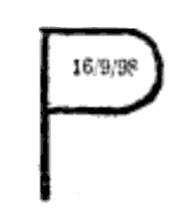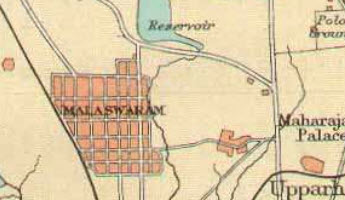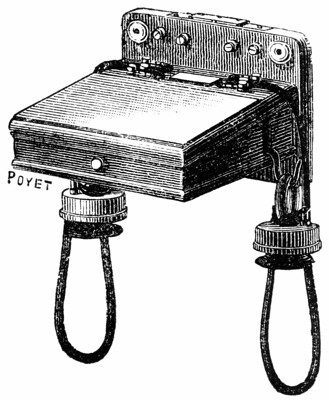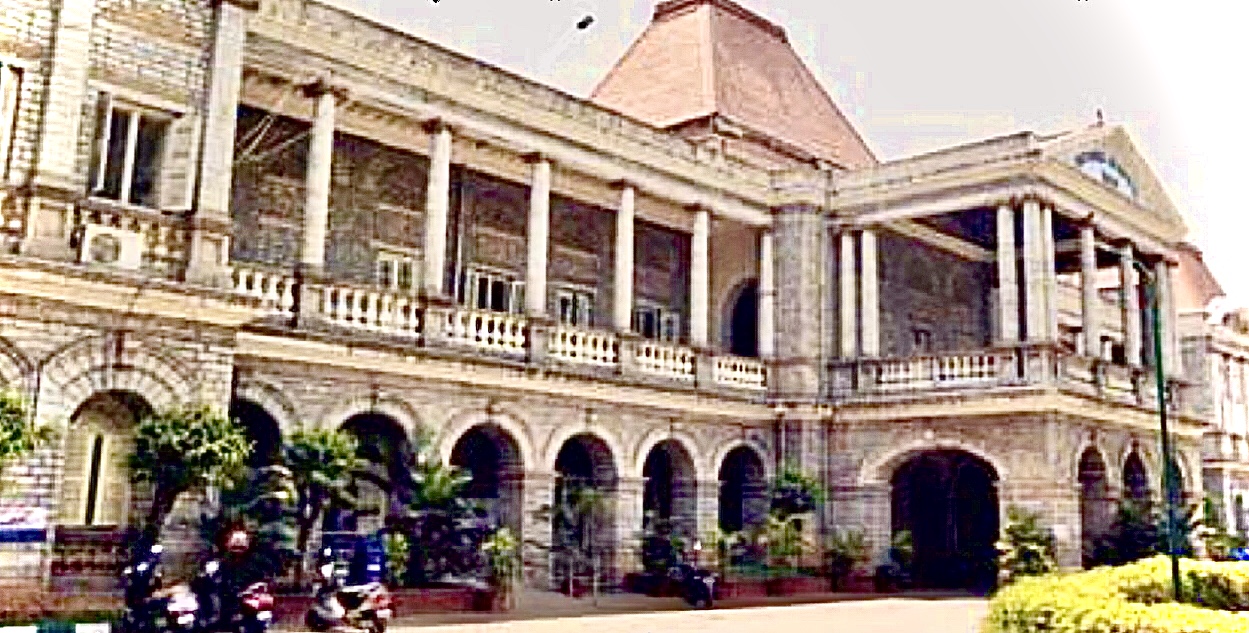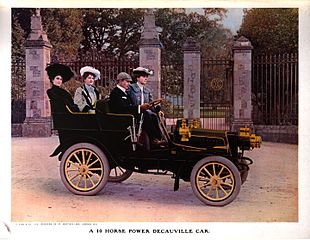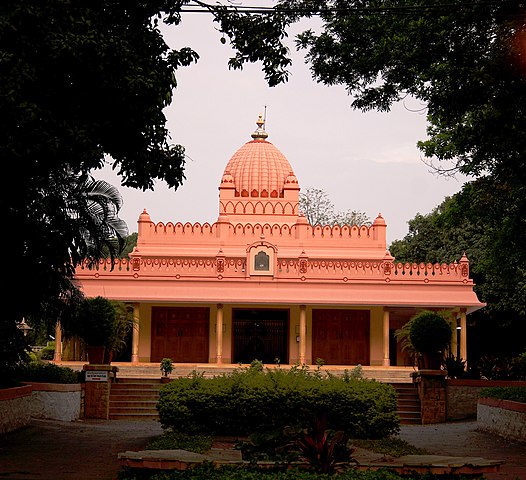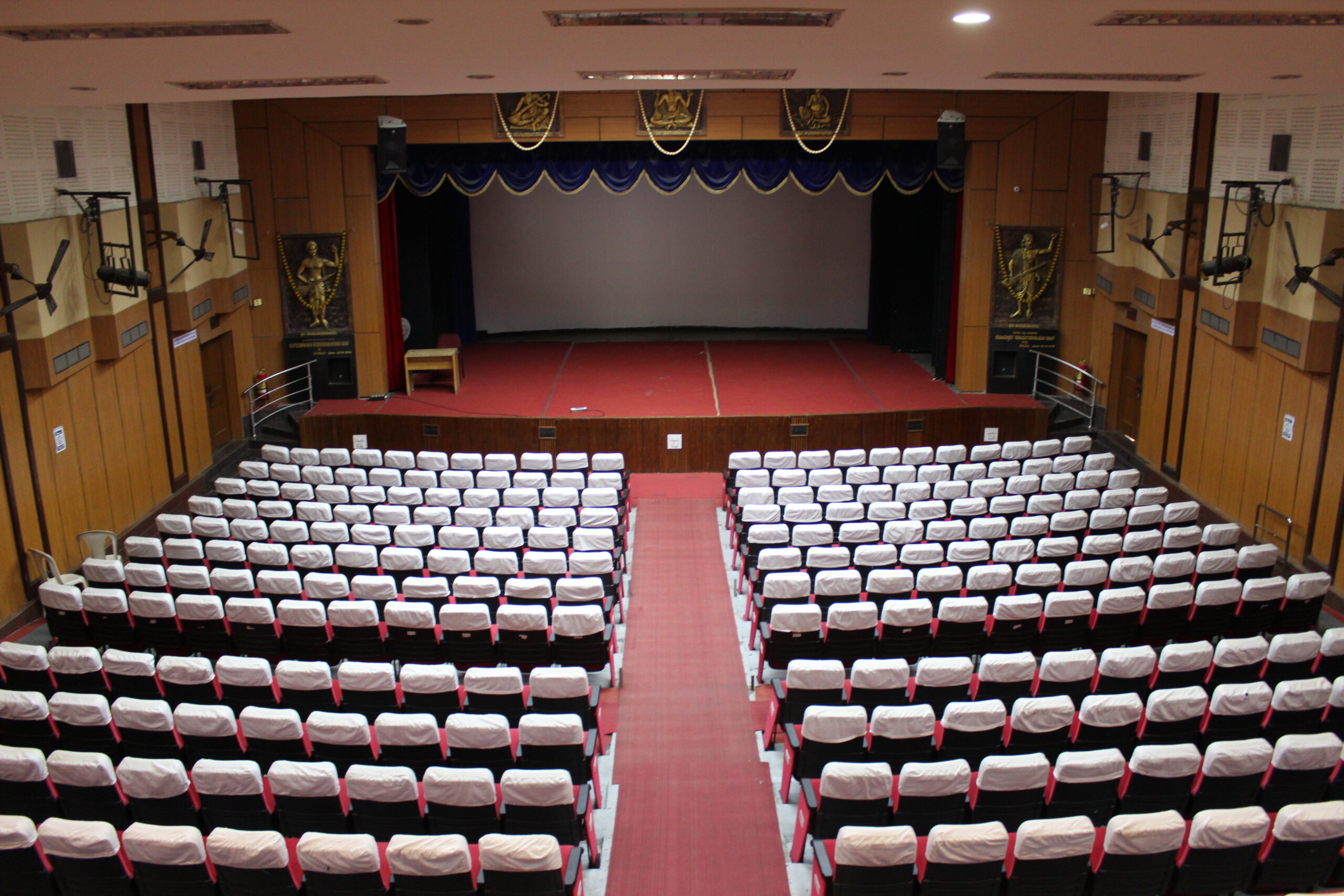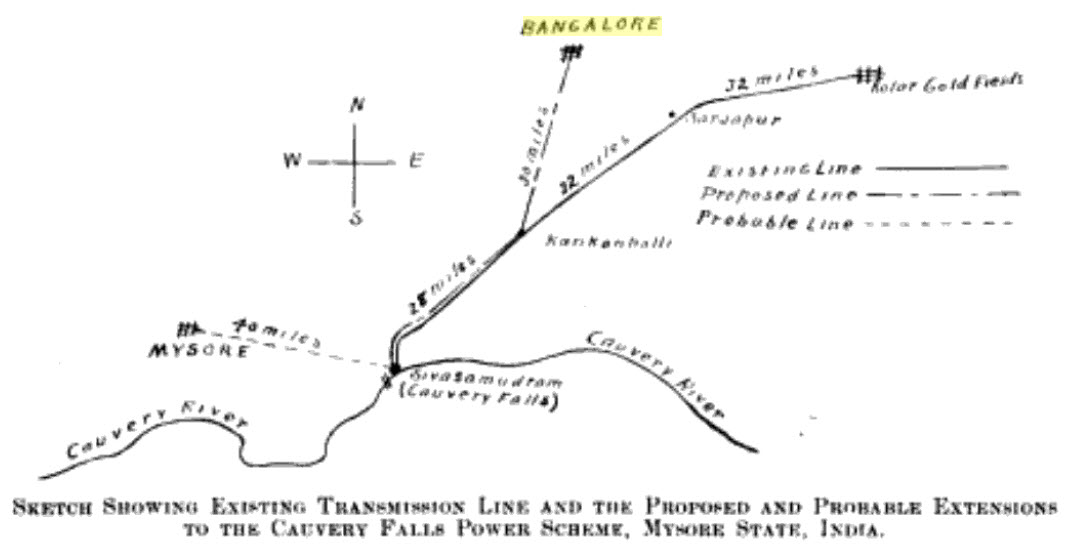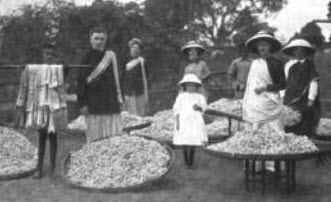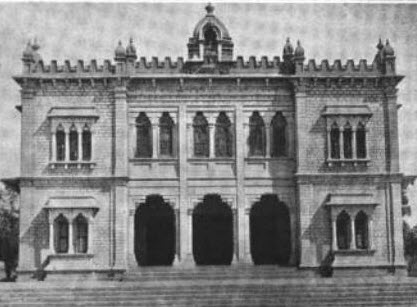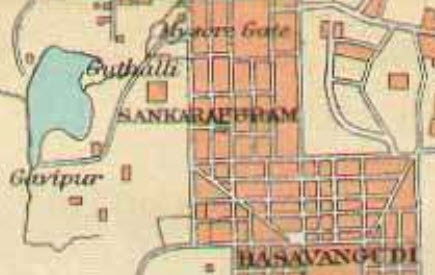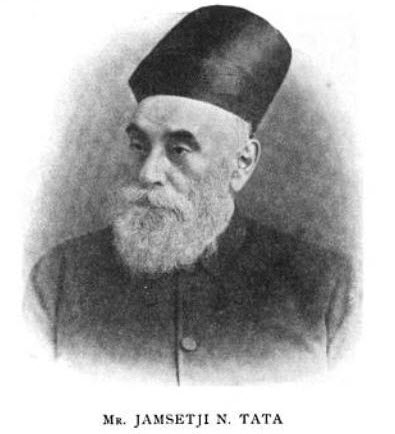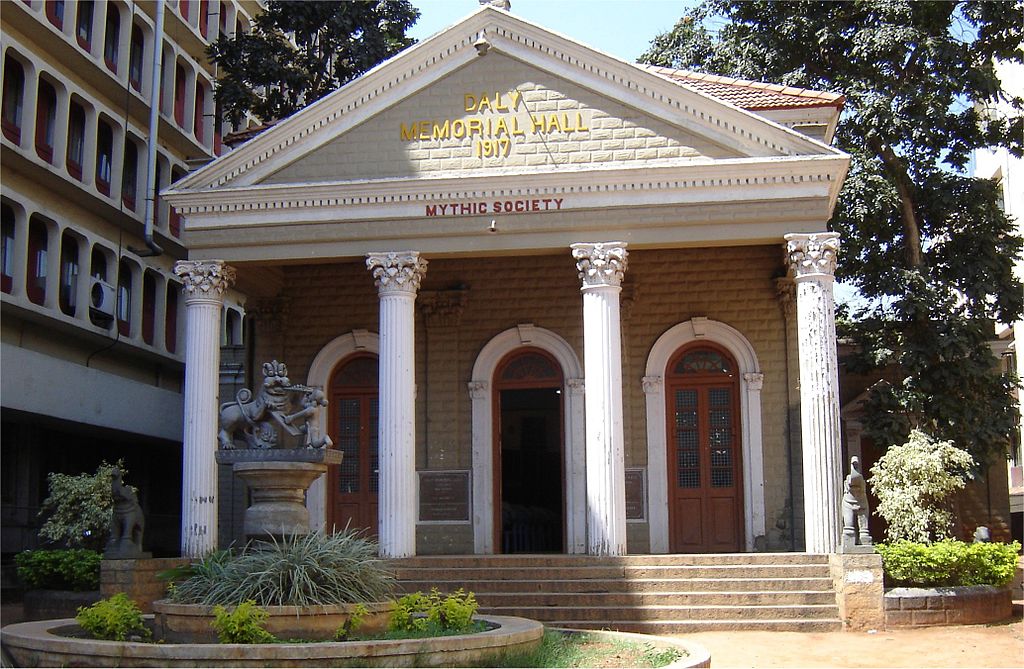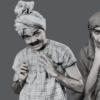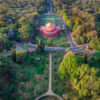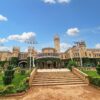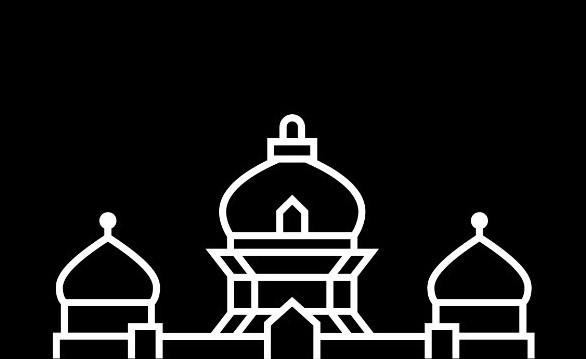Bengaluru through the ages 1881 AD to 1909 AD
We have documented the major events in the history of Bengaluru in this series. While many of you will be familiar with them, we have scoured archived government documents, books and journals to bring out new facts that were not well known. In addition, interesting images embellish the words to provide a complete picture. We hope you enjoy the series.
-
January 1882
Telephone comes to Cantonment
On Jan 28, 1882, a Telephone Exchange was opened in Madras. It appears that they were also installed in Cantonment at the same time. Later during the 1898, more temporary lines were installed to help in the anti-plague operations. Initially telephones were under the control of the Electricity Department in Mysore.
-
1882
Whitefield
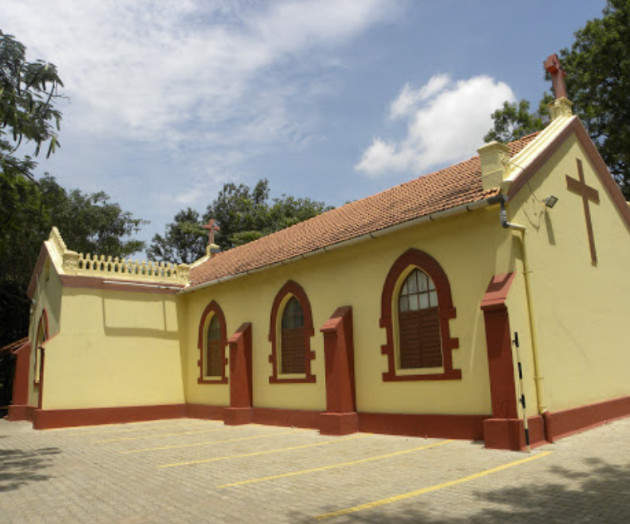
Eurasian and Anglo-Indian colony of Whitefield was established. It was named after D.S. White who wanted to set up a colony for settlers interested in pursuing agriculture and dairy farming. This was made possible through a grant of 542 acres of land by the Maharajah of Mysore. Kadugodi railway station which was situated about two miles away was named as Whitefield.
-
1882
St Joseph's College
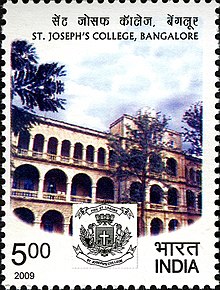
St. Joseph’s College was opened in Bengaluru. In the initial years the college taught up to B.A. degree level and had a staff of ten priests and twenty other masters. In the Report on Public Instruction for Madras Presidency, the results of matriculation exam shows that 3 students were examined in 1882-83 and 1 passed in second class. In 1883-84, this number rose to 11 examined and 4 passed in second class.
-
February 1882
Bengaluru - Mysore Railway

The first through train with passengers from Bengaluru to Mysore was run on February 25, 1882 with the completion of the bridge on Cauvery. The first goods train was run on 1st June 1882. A portion of the line up to Channapatna had been started on February 1, 1881 and up to Mandya on March 20, 1881, just five days before the rendition of Mysore to the Maharajah. Total capital investment in 1882 was ₹42,90,214. Net earnings for 1882 was ₹1,03,495.
It was found cheaper to get Rangoon timber from Madras for the line. Creosoted pine sleepers were brought from Europe to Madras and by road to Bangalore at cheaper rates than local wood. The Engineer in Chief for the project was Major Le-Messurier.
Image: The Railway map of Southern India with the Bengaluru-Mysore line.
-
1886
St Martha's Hospital
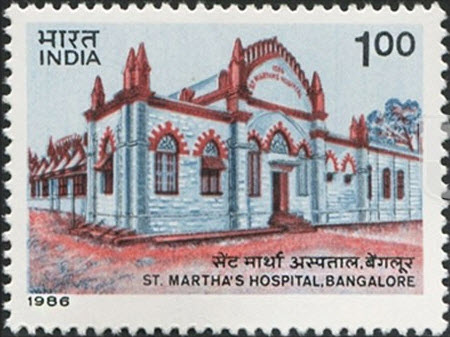
St Martha’s Hospital started by Roman Catholic Mission fulfilled the need for a hospital in Bengaluru City. In August 1887, the Town Hospital and Dispensary was amalgamated with St. Martha’s Hospital. The hospital came into existence due to efforts of the Lady Superior of the Congregation of Good Shepherd in the city. During 1887, the hospital treated an average of 11 in-patients and 154 out-patients per day.
Image: A postage stamp issued to commemorate 100 years of St Martha’s Hospital in 1986
-
1886
Bowring Institute
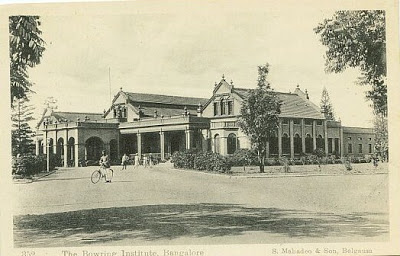
Bowring Institute was started partly by public subscription of ₹6,000 as a memorial to Lewin Bowring, who was Commissioner of Mysore. The Mysore government subscribed ₹10,000 and the Government of India contributed ₹5,000 and the land for the institute. Members and their families enjoyed the use of two tennis courts, a 54’ x 30’ billiards room, a theatre or lecture hall, library (probably the largest in the city at the time) and a reading room.
Social entertainment like music evenings were frequently held. The institute was actually started in 1868 as the “Scientific and Literary Institute” with a monthly grant of ₹50. On Mr. Bowring’s retirement, it was renamed as Bowring Institute and was considered as the finest institute of its kind in India.
Image: Bowring Institute in its early years
-
November 1889
Lalbagh Glass House
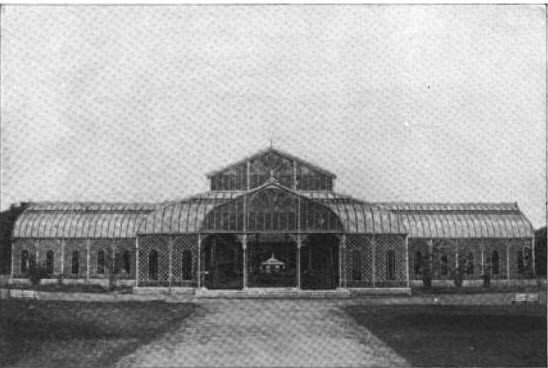
The foundation for the Glass House or Conservatory was laid by Prince Albert Victor of Wales on November 30, 1889. The design was based on an outline sketch made by Ms. Macfarlane & Co of Glasgow and was built at a cost of ₹75,000. It was originally called the Albert Victor Conservatory and was intended to be used for horticultural shows and other exhibitions.
Image: Lalbagh Conservatory or Glass House in 1895
-
1892
Chamarajpet
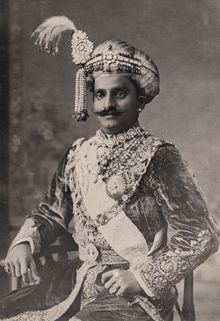
Chamarajpet was formed and added to Bangalore. It was named after Chamarajendra Wodeyar. It is home to Fort High School, Tipu Sultan’s palace and Minto Hospital. The annual Rama Navami Music festival is held at Fort High School during April and May.
Image: Maharajah Chamarajendra Wodeyar after whom Chamarajpet is named.
-
1896
Hessarghatta water supply
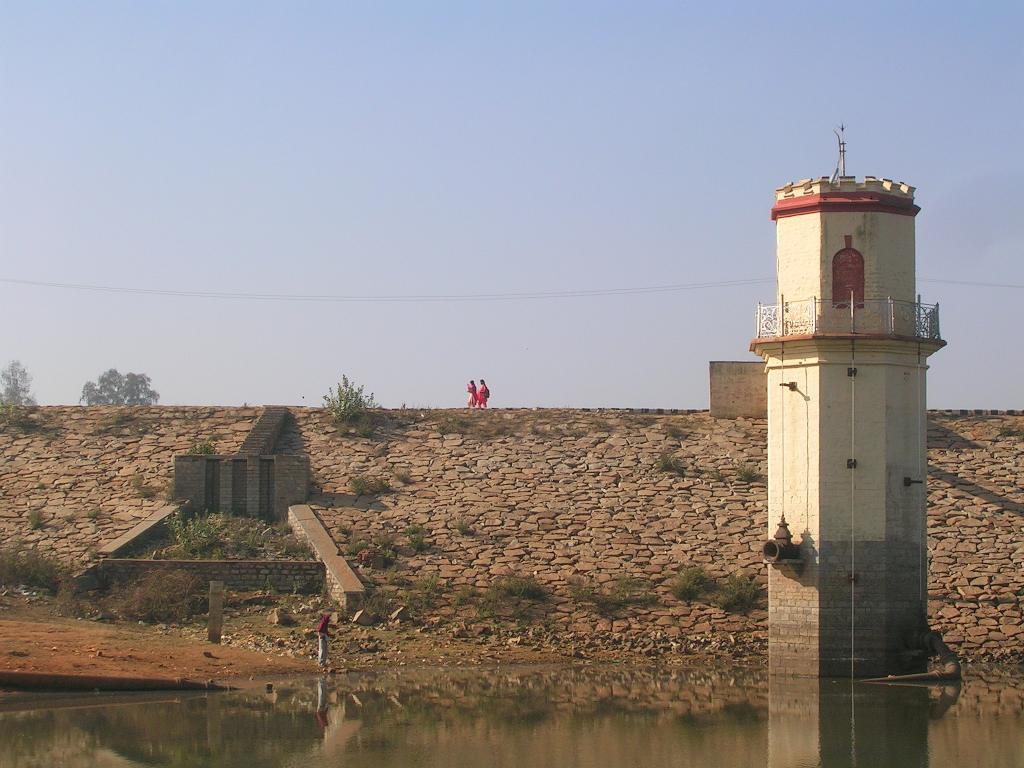
Hessarghatta water supply was commissioned to solve the needs of the city using the Arkavathi river. The project cost ₹19.5 lakhs and water was drawn from 13 miles NW of the city. It was pumped up to the top of a hill in Banavar and from there to Sankey tank through gravitation. It was then stored in the subterranean reservoir at the Race Course and distributed to the city.
Image: Hessarghatta. Courtesy: L. Shyamal (https://commons.wikimedia.org/wiki/File:Hessarghatta.jpg)
-
August 1898
Great Plague
The Great Plague started in Mysore during April 1898. The worst hit was Bengaluru which was affected from August 1898. With a population of about 84,000, over 7,000 cases were reported in the city and cantonment The first reported case came from a man who traveled from Hubli where there was a serious epidemic at the time.
Over 25,000 people fled the city and infected people in other parts. Rev. Henry Haigh in the Methodist Recorder wrote that “instead of the thronged bazaar and teeming streets an ominous stillness prevails. The shops are shut, the house doors locked, the law courts and schools are empty; no vehicles are running and the few foot passengers seen here and there add to the desolate appearance of the city”.
Image: Door signs were posted on homes that were affected by plague with the date inside the letter ‘P’
-
1898
Basavanagudi and Malleswaram
New extensions of Basavanagudi and Malleswaram added to Bangalore. These extensions were created to expand the city and decongest the old parts after the effects of the plague. Basavanagudi was created by acquiring 440 acres of an agricultural village called Sunkenahalli (the Kadalekai Parishe or Groundnut Fair was a tradition in this village) and Malleswaram was formed on 291 acres and named after Kadu Malleswara temple in Old Mallapura village. Sites here were sold at a rate of one rupee per 100 square feet.
Image: Map of Bengaluru with the new extension of Malleswaram
-
1898
Telephone services
Telephone services were started in the city. Temporary lines were laid in the city for anti-plague operations. In the following year, about 50 government offices were provided with connections. On an average about 122 calls were made per day.
A problem in the early years was the theft of copper wire used for telephone lines, which was used to make jewelry such as ear rings and nose rings. After the police failed to catch the thieves, telephone lines were charged with 1000 volts current between 6 pm until 6 am and telephones were disconnected. If someone wanted to use the telephone line, the operator at the generating station was made aware by means of a signal lamp and he disconnected the high voltage from the telephone line. A truly bizarre solution to the problem was thus implemented.
Image: Telephone in 1898
-
December 1900
Victoria Hospital
Victoria Hospital started to celebrate Queen Victoria’s Diamond Jubilee. Originally, it was started as the Government Hospital and in 1901 it was moved to the new building and named as Victoria Hospital. The foundation stone was laid on June 22, 1897 and it was opened on December 8, 1900 by Lord Curzon. By 1905, it was the largest hospital in the city with 72 beds for men and 40 for women. Over 1500 surgeries were performed annually by this time.
Image: Victoria Hospital near the busy Sri Krishna Rajendra (KR) Market area.
-
1903
First motor car
First motor cars were seen on Bengaluru roads. The Maharajah of Mysore, the Dewan and some European officials were the first users of motor cars. Since the roads were not suitable for them, there were frequent breakdowns and punctures. It is recorded that in 1906, motor cars were being made in Bengaluru at a factory where about 150 men were employed in building cycles and cars. One such car was placed at the disposal of the Prince of Wales and it was described as a three seater with 6.5 HP, a water-cooled engine capable of clocking 30 miles an hour. It was rated the same quality as those imported into the country and about $350 less in price.
Interesting trivia: A trip from Bengaluru to Pondicherry during the initial years took 17 hours (with stops) and used 10 gallons of petrol!
Image: A 10 HP car in 1903
-
1904
Ramakrishna Ashrama
Ramakrishna Ashrama started in a rented building In 1904 by Swami Ramakrishnananda. In 1906, the Government under Dewan Madhava Rao gave an area of two acres for the permanent building. Today, it is an oasis of peace in the busy Basavanagudi area attracting people who attend discourses, prayers, events or just for an evening of solitude.
Image: Ramakrishna Ashrama Courtesy: Purushi
-
1905
Bengaluru Gayana Samaja
Bengaluru Gayana Samaja was started by a group of music lovers headed by K. Ramachandra Rao, headmaster of London Mission High School on August 5, 1905. It is perhaps the oldest existing sabha in India. In 1926, the concerts were shifted to Shankaraiah Hall and later in 1962 to its present location.
Image: Modern auditorium at Bengaluru Gayana Samaja on Krishna Rajendra Road
-
June 1905
Electricity Supply
Bengaluru becomes the first Indian city to get electricity. The electrical department of Mysore Government completed the new transmission line from Cauvery Falls, Sivasamudram. On June 28, 1905, the line was successfully tested for about 45 minutes under full voltage of 35,000 volts. The electrical equipment like alternators, transformers were supplied by General Electric Company of USA. On August 3, 1905, the first street lights using electricity were inaugurated by Sir John Hewett, minister of commerce & industry and Member of the Viceroy’s Council.
At the end of the year, about 65 miles of lines were in operation with a total of 861 lamps. Lighting connections to private residences were started in September 1905. Cantonment area got electricity on September 26, 1908.
Image: Map showing the electric line from Shivasamudram to Bengaluru.
-
1906
Tata Silk Farm
Tata Silk Farm started by Jamsetji N Tata. The farm was involved in rearing silkworms, growing mulberries, reeling silk, bleach, weave, twist and dye the silk. Sericulture was given great importance and classes were held by the Salvation Army. Silk from the farm was displayed in the London Silk Exhibition in 1912 and attracted great attention from visitors that included the Royal family.
Schoolmasters trained at the farm were posted as Sericulture Inspectors all over the state at ₹20 per month. By 1912, about 80 people were employed at the farm. Silk magazine of New York called it as “the premier silk school in India”. The location of the erstwhile farm is the area across the Yediyur Lake on Kanakapura Road in South Bengaluru.
Image: Silk related activities at Tata Silk Farm during the 1920s.
-
1907
Shankar Mutt
Shankara Mutt established by Swami Narasimha Bharati. The dressed stone building of Oriental design was constructed by the engineering firm of T Muniswamy Appa at a cost of around ₹2.5 lakhs. It was considered as ‘one of the handsomest buildings’ in the city.
Image: Front view of Shankar Mutt taken in 1914.
-
1907
Shankarapuram
Shankarapuram, the home of Shankar Mutt was added to Bengaluru. Today, it is the home of the iconic National High School (founded 1917), National College (founded 1920) and Brahmin’s Coffee Bar (or BCB) started in 1965.
Image: Map of Bengaluru with the new extension of Shankarapuram
-
May 1909
Indian Institute of Science (IISc)
Indian Institute of Science (IISc) established on May 27, 1909 using the 371 acre land and initial grant of ₹5 lakhs given to Jamsetji N Tata. Mr. Tata passed away before the institute became a reality but his sons DJ Tata and RN Tata completed his dream.
The buildings were constructed by the engineering firm of TCW Skipp at approximately ₹20 lakhs. The first students were admitted in July 1911 and there were only 20 students initially enrolled. Dr CV Raman was the first Indian director of IISc. Today, it has the country’s biggest science library with over 210,000 books.
Interestingly, the soap eventually made at the Government Soap Factory was first made on an experimental scale at IISc.
Image: Jamsetji N Tata, philanthropist and entrepreneur
-
1909
Mythic Society
Mythic Society was established by a group of European enthusiasts led by Frederick Richards, collector of Bengaluru (after whom Richards Town is named). Daly Memorial Hall, named after Sir Hugh Daly, the society’s first honorary president was built in 1916. Mahatma Gandhi visited Mythic Society in 1927. The society boasts of a collection of over 43,000 rare and invaluable books in its library. The society is involved in many research projects focused on history and culture of India.
Image: Daly Memorial Hall at Nrupatunga Road
Main Image: Indian Institute of Science (IISc) © Ayushi Nayak | Dreamstime.com
Featured Posts
Recent Posts
T P Kailasam – The Dark Side of a Genius
August 5, 2024H V Savitramma – Writing for Women’s Rights
June 10, 2024Temples of Knowledge – Best public libraries of Bengaluru
January 22, 2024Bengaluru Palace turns 150
January 14, 2024


